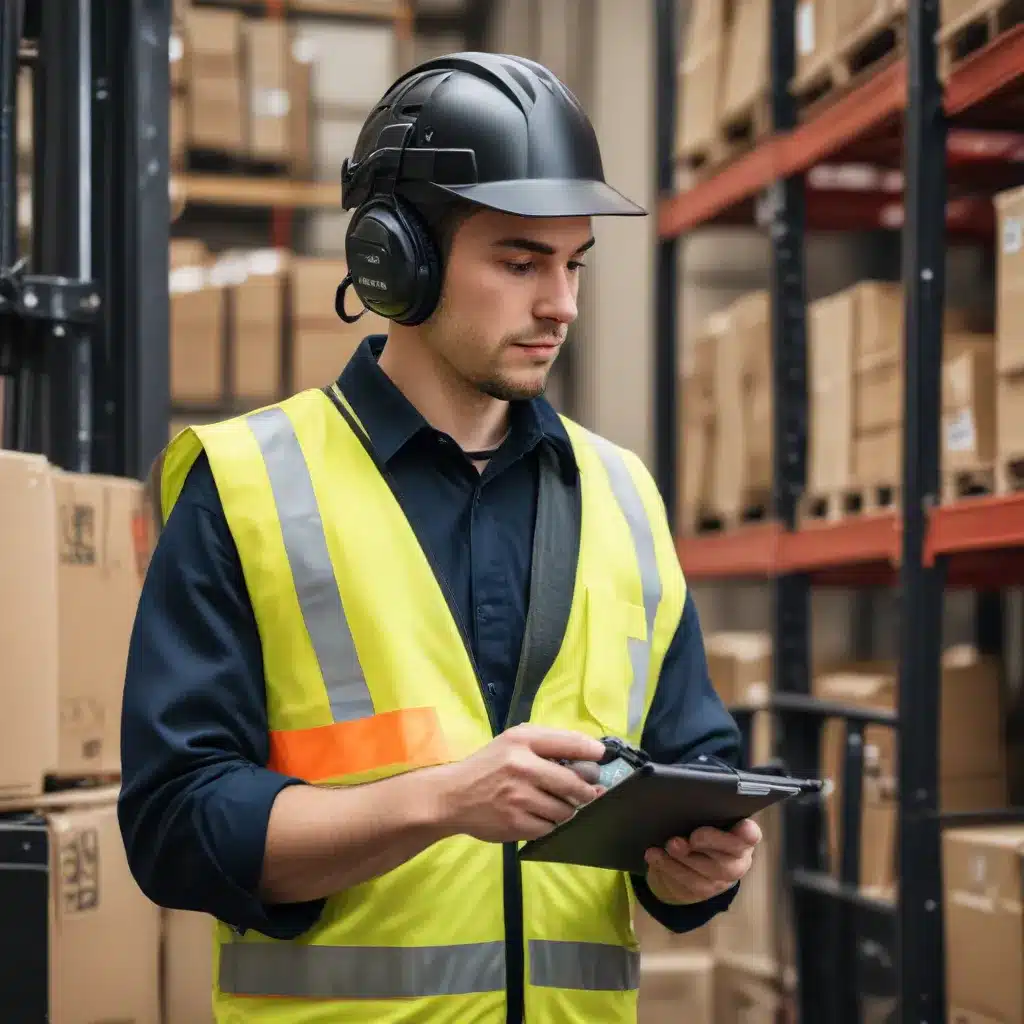
Forklift Operator Wearable Tech Integration: Enhancing Situational Awareness and Accident Prevention Capabilities
The Evolving Role of Wearable Technology in Forklift Safety
As the industrial landscape continues to evolve, forklift safety has become a critical priority for organizations seeking to protect their workforce and maintain operational efficiency. Forklift operators face a myriad of hazards, from potential collisions and falls to mechanical failures, making it essential to equip them with the necessary tools and technologies to enhance their situational awareness and prevent accidents.
Integrating Wearable Tech for Enhanced Forklift Safety
Recognizing the significance of forklift safety, organizations are increasingly turning to wearable technologies to empower their operators and create a safer work environment. These cutting-edge solutions leverage a range of advanced sensors, wireless connectivity, and intelligent algorithms to monitor the operator’s surroundings, alert them to potential dangers, and facilitate seamless communication between forklift operators and pedestrians.
Ultra-Wideband (UWB) Proximity Detection: One of the most transformative wearable technologies in the forklift safety landscape is UWB proximity detection. By equipping forklift operators and nearby personnel with UWB-enabled devices, such as tags or badges, the system can continuously monitor the proximity of individuals to the forklift. When a potential collision is detected, the devices vibrate, providing both the operator and pedestrian with an immediate warning, allowing them to take swift action to avoid an accident.
AI-Powered Collision Avoidance: Forklift collision avoidance systems leveraging artificial intelligence (AI) and computer vision have become indispensable in enhancing operator situational awareness. These systems utilize a network of strategically placed sensors and cameras to detect the presence of people, objects, or other forklifts in the forklift’s path. When a potential collision is identified, the system immediately alerts the operator, enabling them to react promptly and avoid the hazard.
Zone-Based Safety Management: Wearable technologies also play a crucial role in establishing zone-based safety protocols within the workplace. By integrating UWB and AI-powered systems, organizations can define specific zones where forklift operations are permitted, restricted, or closely monitored. This zonation allows for the dynamic control of forklift movement, ensuring that operators and pedestrians are kept safe within designated areas.
Fostering a Culture of Forklift Safety with Wearable Tech
The integration of wearable technologies into forklift operations extends beyond just the physical safety measures. These solutions also contribute to the development of a robust safety culture within the organization, empowering employees and promoting a shared responsibility for workplace safety.
Enhancing Operator Situational Awareness: Wearable devices provide forklift operators with real-time information about their surroundings, enabling them to maintain a heightened state of situational awareness. By constantly monitoring the environment and alerting operators to potential hazards, these technologies help operators make informed decisions, react swiftly, and navigate their tasks more safely.
Improving Communication and Collaboration: Wearable technologies facilitate seamless communication between forklift operators and pedestrians, ensuring that both parties are aware of each other’s presence and can coordinate their movements effectively. This enhanced communication and collaboration foster a shared understanding of safety protocols, leading to a more proactive and responsive approach to accident prevention.
Promoting a Safety-First Mindset: The integration of wearable technologies into forklift operations sends a clear message to employees about the organization’s commitment to safety. By investing in these advanced solutions, employers demonstrate their dedication to protecting their workforce and creating a work environment where safety is the top priority. This, in turn, encourages employees to adopt a safety-first mindset, actively engaging in the implementation and maintenance of these technologies.
Trio Mobil’s Comprehensive Forklift Safety Solutions
Trio Mobil, a leading provider of innovative industrial safety solutions, has been at the forefront of integrating wearable technologies into forklift operations. Their comprehensive suite of products combines UWB proximity detection, AI-powered collision avoidance, and zone-based safety management to create a holistic safety ecosystem.
Trio Mobil’s forklift safety system utilizes a network of strategically placed UWB anchors and AI-powered cameras to continuously monitor the environment. Forklift operators and nearby personnel wear UWB-enabled devices that communicate with the system, allowing for real-time proximity detection and collision avoidance. When a potential hazard is identified, the system immediately alerts the relevant parties, enabling them to take immediate action to prevent an accident.
Furthermore, Trio Mobil’s solutions incorporate zone-based safety management, allowing organizations to define and enforce designated areas for forklift operations. This feature not only enhances the overall safety of the work environment but also provides valuable data and insights to help optimize workflow and improve operational efficiency.
Leveraging Data-Driven Insights for Continuous Improvement
The integration of wearable technologies in forklift operations extends beyond just physical safety measures. These solutions also generate valuable data that can be leveraged to drive continuous improvement in safety performance.
Trio Mobil’s advanced analytics capabilities, powered by machine learning algorithms, provide organizations with real-time insights into safety metrics, incident trends, and areas for improvement. By continuously monitoring and analyzing safety data, employers can identify unsafe practices, implement targeted interventions, and justify investments in safety training, equipment, and technology.
This data-driven approach to safety management fosters a culture of continuous improvement, where organizations can proactively address emerging risks and enhance the overall safety of their forklift operations.
Conclusion
The integration of wearable technologies into forklift operations represents a significant leap forward in enhancing workplace safety and empowering forklift operators. By leveraging cutting-edge solutions that combine UWB proximity detection, AI-powered collision avoidance, and zone-based safety management, organizations can create a safer and more efficient work environment, ultimately protecting their most valuable asset – their employees.
Trio Mobil’s comprehensive forklift safety solutions exemplify the transformative potential of these technologies, offering a holistic approach to accident prevention and the cultivation of a safety-first culture. As the industrial landscape continues to evolve, the seamless integration of wearable technologies into forklift operations will become increasingly crucial in safeguarding the wellbeing of workers and maintaining operational excellence.

